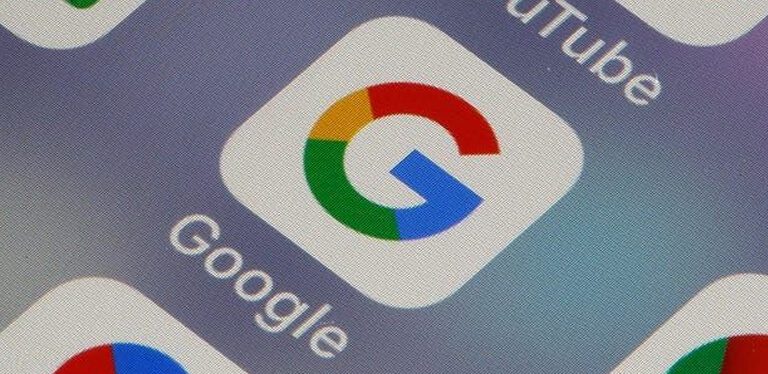Google didn’t just design a logo. It engineered the most recognizable visual identity of the 21st century.
Google’s logo consistently captures the masses amidst brands battling for milliseconds of attention.
It’s not loud. It doesn’t try too hard. And yet, it’s everywhere from your desktop to your wrist. That’s not just branding. That’s behavioral design.
In this blog, you will read about the breakdown of how Google’s logo became a global design case study and why its evolution continues to teach us what modern brand systems should look like in 2025 and beyond.
The Story Behind the Simplicity
Back in 1996, two Stanford students created a search engine named Backrub and its logo? A strange, academic-looking hand symbol forming a “B”. By 1998, that evolved into the first official “Google” logo: a colorful serif typeface that felt playful, experimental, and a little bit awkward. But it worked.
Over the years, Google didn’t just rebrand. It evolved. Shadows came, gradients went, fonts shifted until 2015, when the brand made its boldest move yet: a sans-serif system font. It was a flattened design, and a refreshed color palette that felt light, scalable, and ready for any screen size.

As Sundar Pichai once said, “At Google, we’re always trying to build products that solve big problems in big ways.”
Their logo followed the same philosophy.
Color Speaks Louder Than Words
Google’s use of primary colors with a twist is intentional. Red, yellow, blue, and just one green that hints at disruption within the structure. It subtly tells users: we follow the rules, but we’re not afraid to change them. This isn’t just a color theory. It is actually a visual strategy.
Each hue reflects a core brand value. Blue signals of trust. Red shows passion. Yellow suggests optimism. And green, placed strategically, stands for innovation. In 2025, as brands rush to feel “techy,” Google reminds us of that colors still communicate, often louder than copy.
The Typeface That Told a New Story
In 2015, Google transitioned to a geometric sans-serif font designed in-house, which scaled better, animated more smoothly, and felt more digital. The logo didn’t just look cleaner. It acted cleaner across devices.
Gone was the legacy serif. In its place, a font that looked just as good on a watch face as it did on a 4K screen. For Google, the font wasn’t about aesthetics. It was about functionality, accessibility, and performance.
But what are the results? A brand identity that feels modern without feeling artificial. It’s like corporate without being cold.
Spacing, Proportion, and the Art of Familiarity
Google’s visual system uses spacing and shape psychology in subtle but powerful ways. Rounded letters create a sense of friendliness. Equal spacing increases legibility. Slight asymmetries, like the tilted ‘e’, add character without breaking structure.
It’s this blend of consistency and personality that makes the logo so sticky. It doesn’t try to impress. It simply feels right across languages, cultures, and devices.
Hidden Cues That Stick in Memory
The tilted lowercase ‘e’ isn’t random. It nods to Google’s culture of curiosity and openness. The clean baseline and balanced ascenders reflect precision and scalability.
Even in its most minimal form, the single ‘G’ favicon, the brand holds strong. That’s the mark of a system that works at every level, from favicon to full-scale billboard.
Google didn’t just simplify. It systemized.
Beyond a Logo…A Brand in Motion
Google’s branding is no longer static. The logo morphs into animations on loading screens, pulses during voice search, and adapts within apps. It’s dynamic. Alive. And it reflects the modular nature of modern digital branding.
The identity system now includes color dots, motion patterns, and a visual feedback loop. It is a clear example of how brands can build ecosystems, not just marks.
What Designers and Founders Can Learn
In a time when companies are chasing trends, Google chose clarity. While others layer gradients and abstractions, Google removed the noise.
If you’re building a product today, your identity must work across surfaces from tiny favicons to voice interfaces. What about the lesson? Don’t just build a logo. Build a system that scales.
“Design isn’t what you see. It’s what you remember.”
And from Sundar Pichai himself:
“We try to work on things that billions of people will use every day.”
That mindset shaped a logo designed to live across billions of screens, queries, and moments. Quietly, reliably, everywhere.
Google Has The Logo That Rewrote Branding
Google’s logo isn’t revolutionary because it has changed. It’s powerful because it changed strategically, iteratively, and humanely. It evolved with its audience from the “Backrub” days to the logo we see daily.
In an age where first impressions are pixel-deep, Google’s brand identity proves that design still matters. A lot.
And what are the most iconic logos? They aren’t complex. They’re convincingly simple.
At Fleekbiz, we help brands build systems and logos like this. Intentional, scalable, and timeless.
Let’s design your next evolution NOW!!






